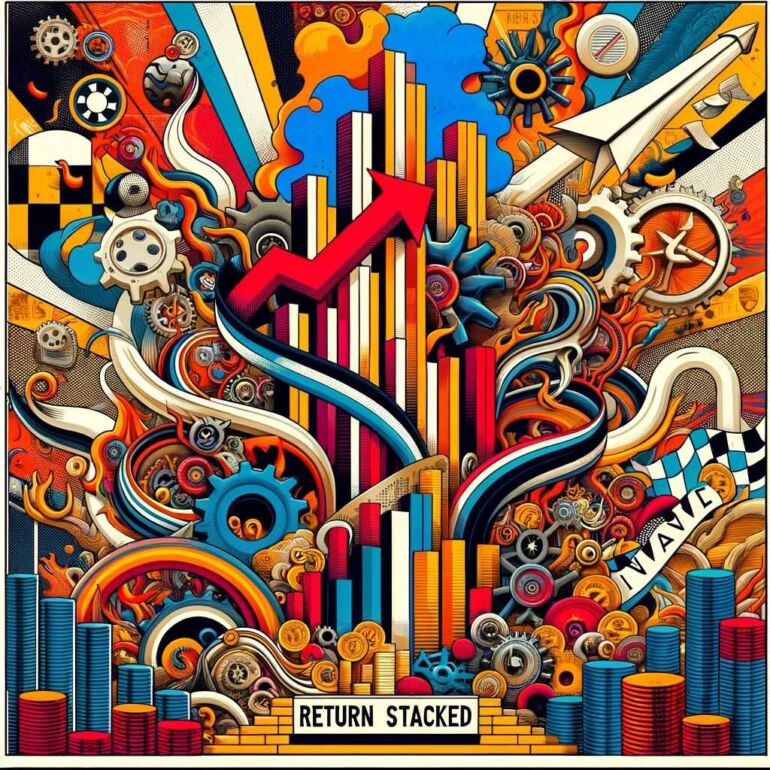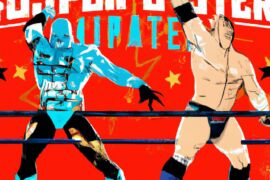Most portfolios of mere stock and bond only combinations are woefully unprepared for suddenly high inflation.
In terms of figuring out all-weather and risk-parity type portfolio solutions, for when recession-inflation rears its ugly head, I couldn’t think of a better “Investing Legend” to consult than Rodrigo Gordillo.
Not only is Rodrigo an expert on this particular topic from an investing point of view, he’s also lived through inflationary shocks in real-time as they happened in his native Peru several decades ago.
First hand experience is the greatest teacher of all.
My experience with inflation is a direct result of my travels abroad.
I’ve now been to Argentina several times where the peso was once $1 USD to 4.
Now it is 1 to 200!
The real-life implications I noticed were things such as sticker menu prices on restaurant menus.
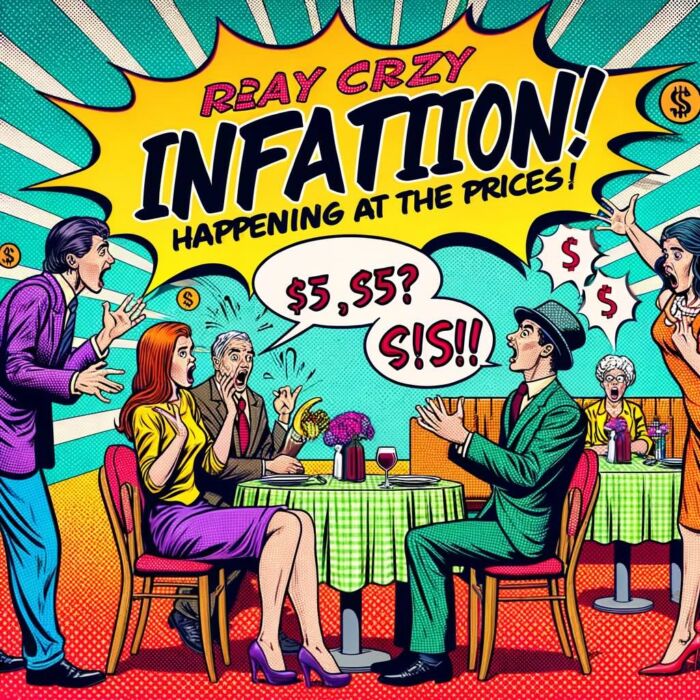
As a tourist exchanging dollars, euros or pounds this wasn’t such a big deal.
A minor inconvenience really.
However, for locals it was devastating.
Salaries were not keeping pace with out of control inflation that was instantly eroding purchasing power.
Many investors who are between the ages of 20-45 have to consult with older generations, who lived through the 70s, to even get a taste of what it was like when inflation was rampant.
Think double digits some years.
1974 (12.34%). 1979 (13.29%). 1980 (12.52%).
Yikes!
Investors are foolish to think this kind of scenario could never happen again.
Thankfully we have Rodrigo here with us today to help wade through it all.
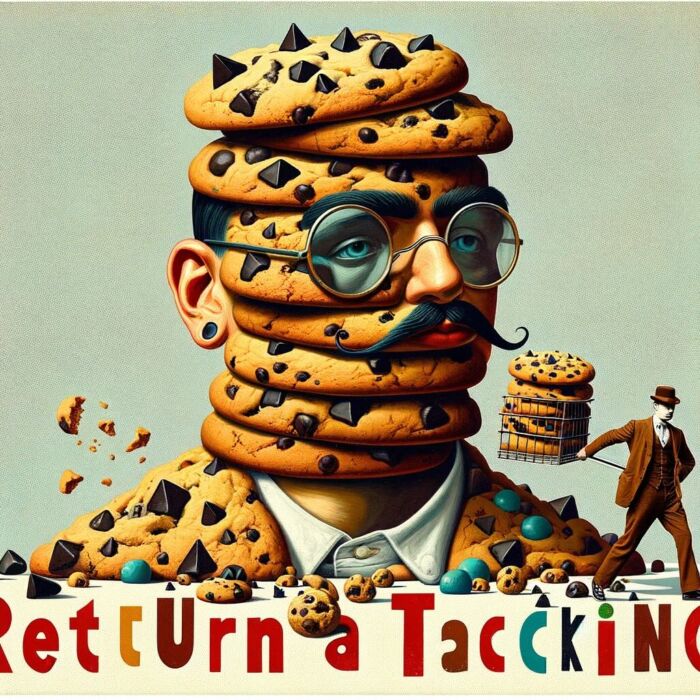
Given Rodrigo’s skillset we could cover numerous topics but for the purposes of this interview we’ll focus mainly on stagflation regimes (inflationary shocks) and all-weather investing ideas + risk parity type portfolio solutions where we seriously rethink the traditional 60/40.
It just so happens that Rodrigo and the rest of the ReSolve team (including Adam Butler and Mike Philbrick) are working with Corey Hoffstein of Newfound Research on an all-weather investing solution for enhancing a 60/40 portfolio in a manner that makes it more robust and regime ready for whatever economic curveball is thrown its way.
They’ve come up with the Return Stacked 60/40: Absolute Return Index that can be tracked over at ReturnStacking.Live.
We’ve got a lot to cover so let’s turn things over to Rodrigo!
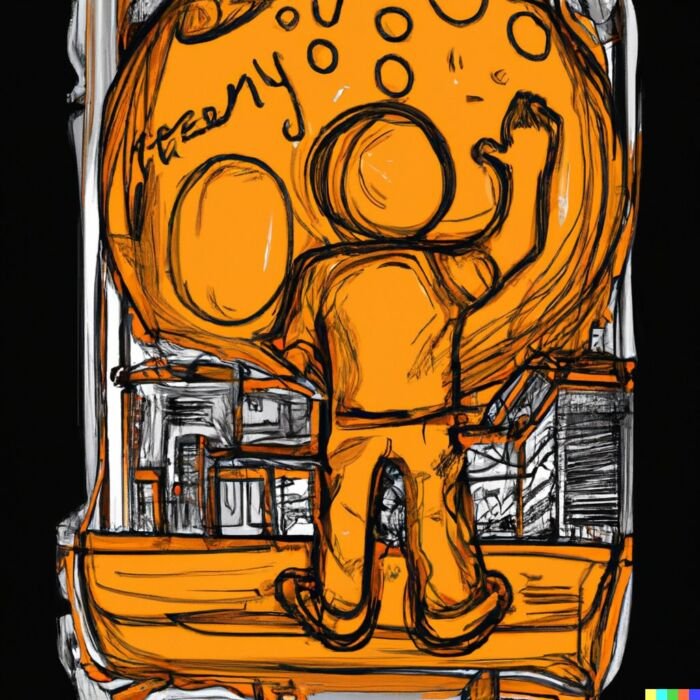
Preparing Portfolios for Inflation Economic Regimes
Hey guys! Here is the part where I mention I’m a travel vlogger! This “Investing Legends” interview is entirely for entertainment purposes only. There could be considerable errors in the data I gathered. This is not financial advice. Do your own due diligence and research. Consult with a financial advisor.

These asset allocation ideas and model portfolios presented herein are purely for entertainment purposes only. This is NOT investment advice. These models are hypothetical and are intended to provide general information about potential ways to organize a portfolio based on theoretical scenarios and assumptions. They do not take into account the investment objectives, financial situation/goals, risk tolerance and/or specific needs of any particular individual.
Return Stacking with Rodrigo Gordillo


Inflation in Peru | A Personal Story
Q1) Rodrigo, you’ve had a rather unique experience of having lived through suddenly severe inflation first hand.
What was it like when things really got out of control in Peru before you moved to Canada?
And how has your first hand experience with inflation informed your views as an investor many years later?
A1) My formative years in Peru were eye opening to say the least.
Between 1989 and 1990 we saw a six month period where inflation reached 7,200% year-over-year.
Sadly for my family this jump in inflation coincided with my grandfather having recently retired as an accountant with the equivalent of about $1million USD in Peruvian dollar savings.

Importantly, he had written letters to all of his children expressing how they didn’t have to worry about needing to support him in his old age because hard work and disciplined saving pays off.
By mid 1990 all of his retirement savings were worthless.
Concurrently, our neighbour was also struggling making his domestic currency mortgage payments.
After the hyperinflation phase his mortgage debt, in real terms, was so small he was able to pay it off with a few US dollars sitting under his mattress.

This experience dominated family conversations for decades and after the dust settled I can say that I learned two major life lessons:
- Firstly, rampant inflation hurts savers really badly and helps debtors profoundly.
- Secondly, cash is NOT a safe haven asset. It is a very active bet that, in the wrong economic regime, can lead to immense adverse effects for savers.
Preparing for Inflation As Investors
Q2) Given that pesky persistent inflation has become a real issue in many countries, for the first time in decades, what are some of the ways investors can prepare for this type of economic regime?
When stocks and bonds tend to correlate (like we’re seeing now) during inflationary shocks, what are some uncorrelated alternative asset classes and strategies that can aid in fortifying portfolios?
A2) Well, the easy answer should be intuitive for anybody, if you’re structurally constrained to building a long-only portfolio, you should hold things that will appreciate in value when inflation is on the rise.
These types of assets would be commodity exposure across all available sectors (not just gold!).

This is because different commodities provide protection at different times during the inflation timeline.
Treasury inflation protected securities (TIPS) could also be useful if we expect the CPI to be a true reflection of discretionary spending.
The key is in sizing these exposures correctly.
But given the name of your website, I’m sure we’re all familiar with how to properly weight portfolio allocation within a Risk Parity framework.
If we allow ourselves to remove the shorting constraints, then I believe strongly that active multi-asset long/short strategies via futures contracts across equities, bonds, commodities and currencies is by far the most robust inflation fighting solution.
In fact, besides Risk Parity, I’ve dedicated my whole career to this area of systematic global macro investing.

The reason for this is that broad inflationary decades are not really just a decade of persistent unadulterated inflation; they tend to be interspersed with momentary periods of deflation as policy makers attempt to fight runaway inflation.
We prefer to call these decades of inflation volatility instead which means that at any given time you will have big commodity winners and big commodity losers.
For example, as we write this on May 2022, we see that energies and grains are making new highs (supply push inflationary) while copper, platinum and palladium are getting badly hit (negative growth shock).
Hence, we’re able to be long the former and short the latter, all smack in the middle of a broad inflationary thrust.
I will add that inflation protection within these strategies doesn’t just stem from participating in the commodity complex.
The ability to short equities and bonds is another distinct benefit – especially when they become correlated to each other as we’ve seen this year.
In fact, a significant portion of 2022’s profits, from this space, have come from shorting sovereign bonds.
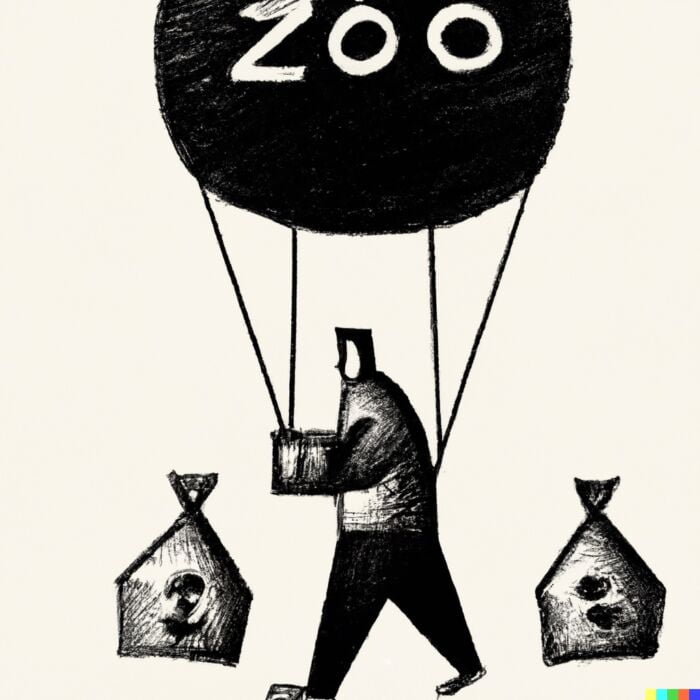
Return Stacked 60/40 Index
Q3) One of the reasons I’m so excited about the Return Stacked 60/40 Index is that I feel it represents a Gen-3 expanded canvas solution.
Let me explain a bit.
The first generation of leveraged products were the 2X and 3X single asset class variety.
Typically, these are concentrated equity bets on popular indexes which already have significant risk profiles at the 100% level.
At the 200% to 300% level, I think of these as hero/zero products.
Plug a QQQ 2X or 3X product into an after-2008 scenario and you’re a hero.
Truly, a genius.
Try that scenario in the 2000s and you’ve gone bust.
A total zero.
These products seem like sequence-of-return-risk toys to me and they help perpetuate the myth that leverage is bad.
The next generation of products, we’ll call these gen-2, are far more promising as they take two historically uncorrelated asset classes and combine them together with a ‘sensible amount’ of leverage.
When I say ‘sensible’ I mean an amount that, generally speaking, makes them still less volatile than equities only.
These make for great potential building blocks.
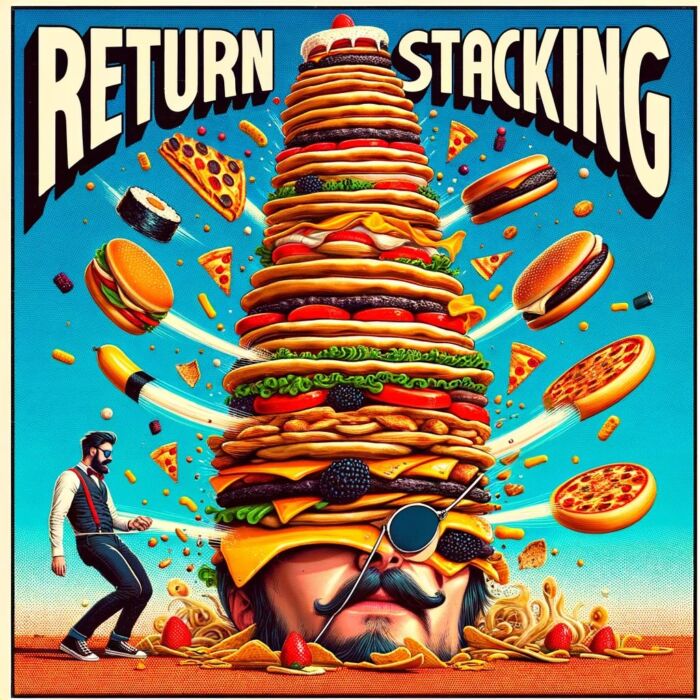
Now the Return Stacked Index would be a gen-3 product in my opinion.
It is a multi-strategy plus multi-asset class solution that moves beyond just stock-bond combinations and has significant exposure to alternatives and various other diversifying strategies.
Instead of being a toy (curiosity) or merely a building block it seeks to be positioning itself as a total portfolio solution.
Can you speak to the evolution of these products and what the Return Stacked Index represents in the grand scheme of expanded canvas solutions?

A3) Yes, and I do like your framework, but I think it’s important to point out that this first-to-second gen evolution only relates to retail investor access.
For the institutional world this is ancient technology that has been applied fruitfully for decades to achieve excess returns by stacking uncorrelated asset classes/alternative strategies without necessarily increasing portfolio risk.
In fact, all of us in the wealth management industry learned about this robust framework in chapter 1 of our finance textbooks.
We learned that putting together asset classes that zig with others that zag should increase the return per unit of risk we can achieve.
However, this diversified portfolio will need a modest amount of leverage to match our original required return.
We also learn that this is much safer than moving towards a 100% equity portfolio because by definition the return-to-risk profile of a single asset class is expected to be lower than a diversified portfolio.
Unfortunately, advisors are shortly after placed in a world where the only tools available for use are equities and bonds whereas leverage is frowned upon by their compliance departments.
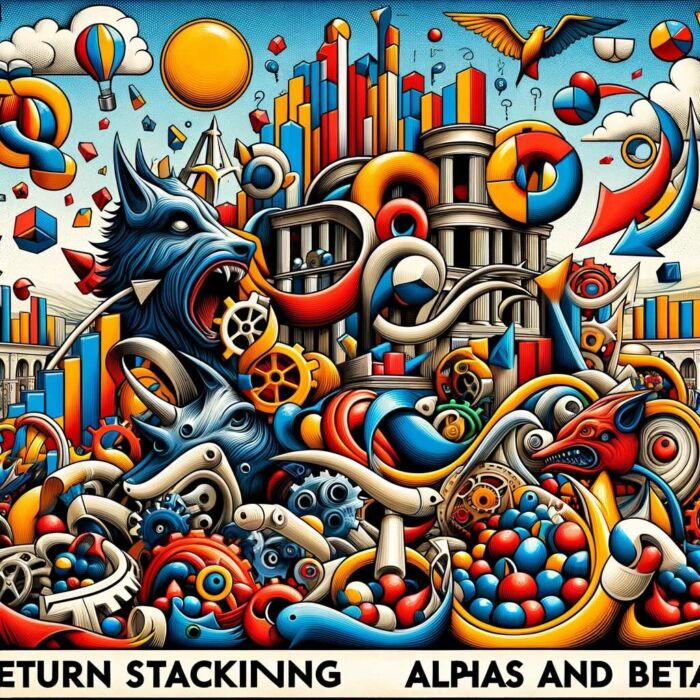
With these constraints it’s no wonder that we are now in a world where most investors are conditioned to reach for yield by moving up the equity risk curve exclusively; it has been their only option!
This was broadly true up until 2-3 years ago when the liquid alternative regulations allowed forward thinking providers to start applying best portfolio construction practices.
We began to see products producing two different betas stacked on top of each other or a unique alpha and a beta.
This means that for every dollar an inventor gives one of these funds they get more than a dollar’s worth of exposure.
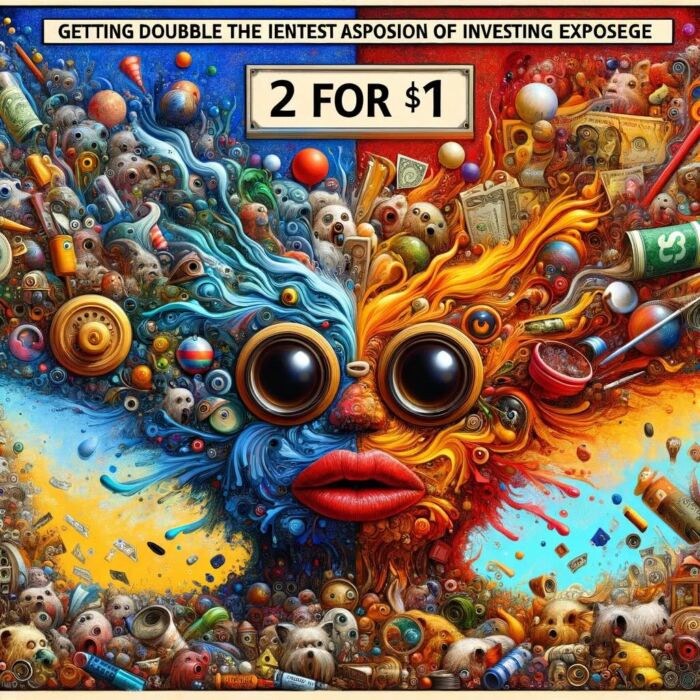
You might see $1 of S&P 500 and $1 dollar of Bonds (PSLDX), or $0.50 of global equities with $1 of long/short Trend (BLNDX) or $0.75 active bonds and $0.75 with a tail protection overlay (NFDIX).
Close to your audience’s heart is our own stacked strategy that we began sub-advising for in 2018 which is Risk Parity stacked with Systematic Global Macro and a tail protection overlay (RDMIX).
I could go on but suddenly investors and advisors could finally begin putting together portfolios with different stacked exposures in robust ways to provide much needed structural diversification without necessarily sacrificing returns.
Return Stacked 60/40 Portfolio: Fund of Funds
Q4) So let’s take a look under the hood of the Return Stacked Index.
We’ve got a fund of funds scenario with exposure to a lot of different asset classes, strategies and diversifiers.
Can you break down the different strategies within the index and what they represent in terms of the portfolio overall?

A4) I think this index was born from a place of necessity.
For 15 years we’ve been pounding the table on the need to create all weather portfolios like Risk Parity and Systematic Macro to protect against the possibility of prolonged bear markets and/or prolonged inflation regimes.
However, I found that no amount of education moved the needle enough to make a big difference in a world where the 60/40 portfolio had a 10 year return to 2021 that was the highest seen in it’s history with a return-to-risk ratio that was nearly 2!
Asking that audience to reduce their equity/bond exposure to make room for recently underperforming commodities and long/short multi-asset alternatives was simply a non-starter.
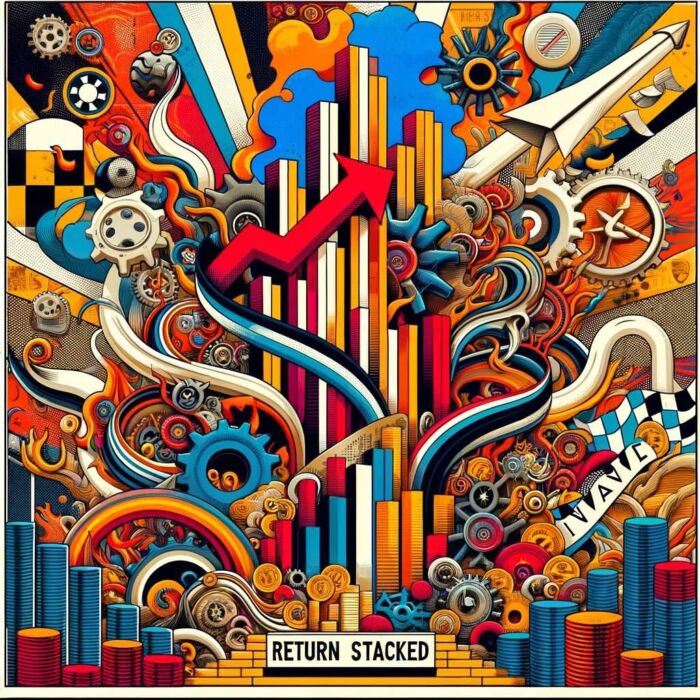
In discussion with Corey Hoffstein of Newfound Research we came to realization that the best solution was not to say, 60/40 OR diversifying alternatives, but rather 60/40 AND diversifying alternatives and the availability of these new stacked public funds allowed us to do this.
We first scoured the universe, to get enough stacked ETF’s and Mutual funds that provided the stacks we wanted in the right proportions, so that an investor buying the index would be able to get 60% equities and 40% bonds with an extra diversifying exposure on top.
For the additional stack we decided to eschew diversifying into other betas like gold and commodities given that historically those asset classes tend to lose money 4 out of 10 years on average.
For this index to succeed as a yes-AND approach we needed to stack diversifiers that had a chance of providing positive returns 9 out of 10 years similarly to how Equities and Bonds have done in the past.
Furthermore, these diversifiers had to fill in the two major blind spots the 60/40 has: prolonged multi-year bear markets and prolonged inflationary regimes.
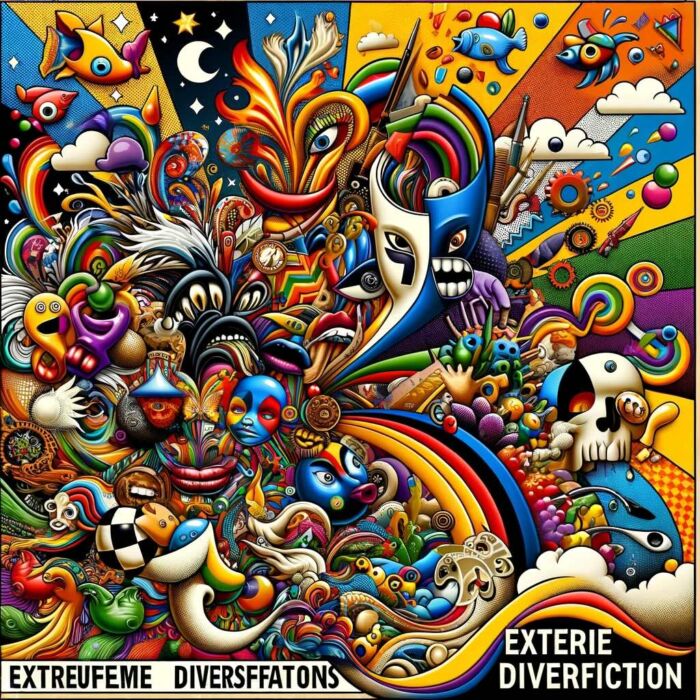
As such, we decided to stack Trend Futures and Systematic Global Macro.
Both have the absolute profile we were looking for and by virtue of being able to take concentrated directional bets across equities, bonds, commodities and currencies tend to thrive during periods of economic recessions and inflationary periods.
Hence the index is comprised of 10 stacked ETF’s and Funds that in combination provide around 60% equites, 40% Bonds, 30% Trend Futures and 30% Systematic Global Macro.
I will say however, that the Index is merely one of the many implementations that could be used.
You could choose to stack commodities and gold to approximate a Risk Parity portfolio or add more alt exposures and less of equities and bonds.
The concept is not prescriptive and our goal was simply to expand the opportunity set.
Source: YouTube on the Meb Faber Show

Branding of Leveraged Portfolio Strategies
Q5) One of the things I’ve noticed is that the branding of the Return Stacked Index is quite impressive.
Hats off to you guys.
We’re a culture that does indeed love to stack.
Given the option for an extra patty we’ll take it.
A few cents more for a soda bigger than our heads.
Yes, please.
In an industry where “literal” is often the first choice, how important is branding for a unique index like this?
After-all, this isn’t the Portable Beta Multi-Fund + Multi-Strategy Alternative Asset Class Fund of Funds Quant Legends Collaboration All-Star Team Extravaganza Leveraged Total Portfolio Solution Alpha-Seeking Series 1-A.
It’s simply Return Stacking.
Is moving beyond “geek speak” to something more accessible for the everyday advisor or investor a primary factor here?

A5) Absolutely, If we want the average investor to be able to take advantage of the same portfolio construction techniques sophisticated institutions use today we needed to make it accessible.
Lot’s of words have been thrown around over the years for this approach: portable alpha, portable beta, structural alpha, alpha overlay etc.
None of this has pierced the retail audience veil.
We thought in a world of low expected future returns that “stacking” returns on top of your traditional portfolio would instantly resonate with investors trying to find solutions that don’t force you to take more equity risk.
Luckily this language has resonated and adoption is really taking off.

When Will Return Stacking Outperform/Underperform?
Q6) So let’s go through potential scenarios with the Return Stacked Index.
Given its benchmark is the 60/40 when would we expect it to clearly outperform?
When should it do slightly better?
And conversely, when can it potentially underperform for a while?

A6) Great question, long/short multi-asset tends to do best during periods of chaos in the market.
Given that most of these strategies invest in over 50 different global markets, the more chaos in markets the more dispersion observed within this universe; the more dispersion the more unique alpha opportunities active managers can find and the longer the chaos ensues the higher the expected P&L should be.
It turns out that periods of high dispersion go hand-in-hand with inflationary regimes and negative growth shocks.
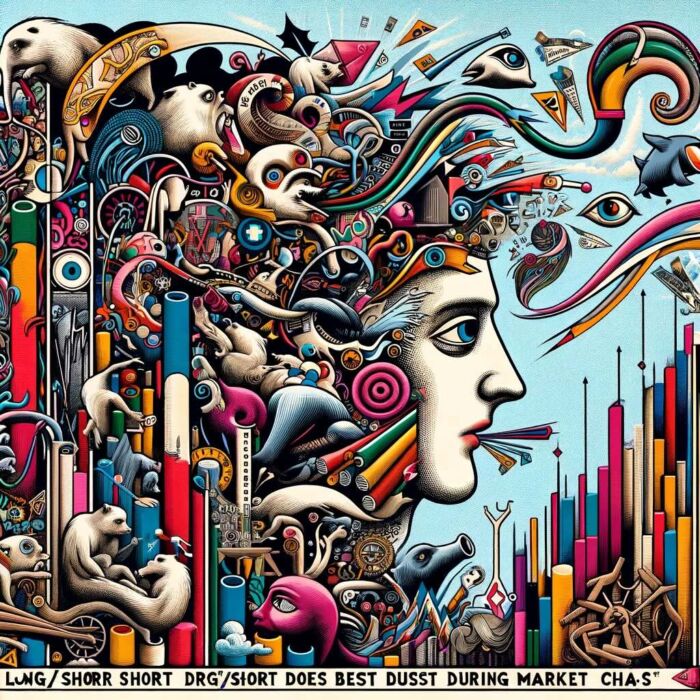
In contrast, during periods of benign inflation, persistent positive growth and abundant liquidity, we tend to see a small subset of growth stocks attract the vast majority of the capital and markets become a bit one-sided.
In this type of winner take all regime neither global diversification nor active trading are likely to do as well as a concentrated portfolio.
Hence we would expect the diversifying stack of the index to provide modest, low single digit stacked returns with possibly a handful of negative stacking years.
In contrast, periods like we’re seeing now should sow the seeds for mid-to-high single digit excess returns.

Leverage As A Tool vs Leverage = Ruin
Q7) So one of the things that is likely going to be a criticism of this index is the fact it uses a modest amount of leverage.
There are, of course, the leverage hounds out there that bark on demand anytime the L word is casually tossed around.
I clearly don’t agree with them at all.
But for those suggesting why not just shave down your equities and bonds to make room for the alternative asset classes and strategies you’re pursuing in this index, what do you say to them?
How do you justify the amount of leverage you’re specifically using in this expanded canvas format?

A7) I think investors need to recognize the degree to which their whole investment life is some sort of levered play.
Some is explicit leverage like using debt to get a college degree for increased future income or putting 20% money down on a primary residence where you are personally levered 400% to your down payment.
Some is implicit leverage when investing in the S&P 500 whose underlying companies are on average levered 300%.
Clearly we, maybe subconsciously, are okay with some types of leverage.

In the case of portfolio leverage we are not advocating people borrow money to buy 2x more S&P 500 exposure, because while this may provide 2x returns it also provide 2x more risk.
The goal should be to use leverage to stack an investment that zigs when their underlying portfolio zags.
In this way the leverage deployed will be used to stack returns while not necessarily stacking the risk of the portfolio and in fact possibly reduce it.
Are there risks that we should be aware of with leverage?
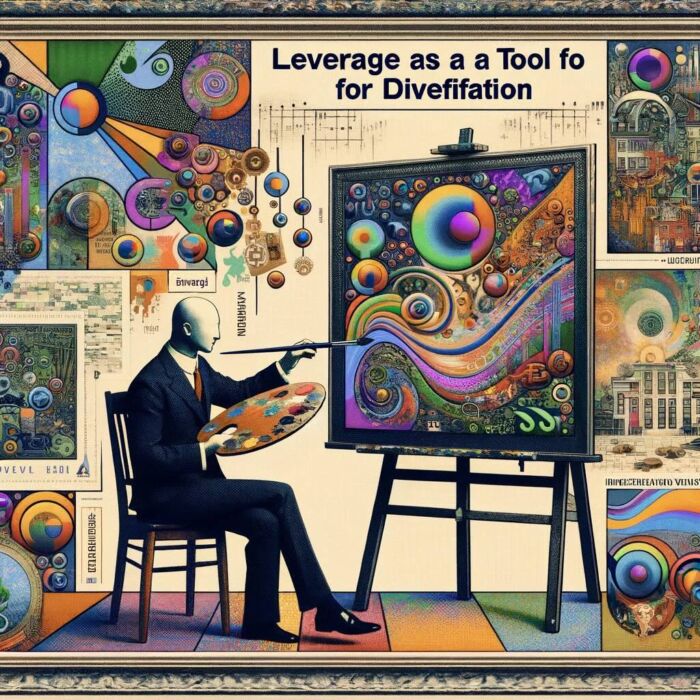
Of course, the diversifying stack will not zig 100% of the time when 60/40 zags so like anything in investing that provides excess returns there are unique risks involved.
The question investors need to ask is if these risks outweigh the risk of equity concentration.
In our view it does not come close.

Expanded Canvas Portfolios Education
Q8) Let’s imagine a Jack and Jill scenario.
Jill, the in-the-know advisor is up to date with the latest research.
She understands the importance of diversifying beyond just stocks and bonds and she’s also aware that expanded canvas solutions offer enhanced returns meets risk management potential.
But her client is Jack.
He’s an average investor who understands a stock is a sliver of ownership in a company and bonds are basically just loans.
He’s not really up to date with alternatives such as trend-following or convexity.
He’s a meat and potatoes kind of guy.
When Jill mentions leverage and trend-following to Jack, he’s lost in his own head, reminded of a recent episode where his partner went on a trend-following shopping spree for the latest and greatest in fashion using credit card leverage.
That one took a few months to pay off.
His heart is racing and his head is spinning, more than a bit triggered by that memory.
Not really grasping the potential benefits he says “no” to the upgrade of going from 60/40 to the Return Stacked Index.
For scenarios when advisors or clients or DIY investors are not grasping some of the concepts, of the more esoteric alternative sleeve strategies of the Return Stacked Index, do you have a plan in place to educate in a way that informs and melts away some of the confusion?

A8) Like anything new, the best and only thing we can do is constantly and consistently educate.
Language like Return Stacking is the gateway language to doing things better but ultimately investors need to do the hard work required to truly internalize the benefits of all of this.
Hence, why we (along with other forward thinking asset management firms) go out of our way to provide digestible content that slowly move investors and advisors through each concept.

I’ll also say as fiduciaries, Registered Investment Advisors at some point have to take the responsibility of doing what is right for the investor in spite of the end client not understanding 100% of what they are invested in.
That is what duty of care means, providing a level on competence and business judgement that is specific to the fiduciary and not the principal.
We’d like to think that investors understand all the ins and outs of owning Tesla, but they don’t, they lean on the fiduciary relationship and trust that the advisor is acting in the investor’s best interest.
It should be no different when thinking about applying the Return Stacking concept for their client’s portfolios.

Importance Of Being Open Minded As Investors
Q9) It seems to me that in order to arrive at the Return Stacked Index solution it takes a certain amount of open mindedness and awareness of the latest research.
You kind of have to be like a sponge investor.
Soaking everything up and expelling what doesn’t make sense.
So many in this industry seem to succumb to groupthink, orthodoxy and convention.
They dig a trench and start throwing grenades from the bunker defending their given die-on-that-so-called-hill of a position.
No new information seems to interest these types unless it is material that supports their entrenched confirmation bias.
How important is it to be contrarian and open-minded to think of portfolio solutions that are out of the box relative to industry standard?

A9) I don’t know if “contrarian” is the right word, I think being “curious” is the requirement.

There is nothing contrarian about what we are espousing, it’s just where one ends up if you keep on peeling the layers of the investment onion.
The problem historically has been that the onion stopped being peeled at the equity/bond paradigm because there was no other option.
Suddenly the curious investment public has been handed a new and deeply layered onion that will take the next generation some time to get through.
However, when they do get through it, everything we’ve talked about will be as commonplace as the 60/40 is today.

Travel and Food in Peru
Q10) Thanks so much for taking the time to do this Rodrigo!
The last question, since this is a blog from a travel vlogger, is about travel and food.
You’re from Peru and for those who don’t know this already some of the best cuisine exists from your home country.
What would you suggest people try eating if visiting Peru for the first time?
And to follow up, is there anywhere you haven’t been to in Peru you’d love to visit someday?
A10) Great question.
Well when it comes to food you really can’t go wrong with choosing the two Peruvian restaurants currently in the top 50 in the world: Central (featured in season EP.6 S3 of Chef’s Table) and the couple responsible for putting Peruvian cuisine on the map – Astrid & Gaston.
However, I always recommend chatting up your taxi driver to give you the best hole in the wall locations where the locals dine on the daily.
My favourite is Canta Rana in Barranco or La Red in San Isidro.
(Samuel speaking: Woah! We just went to Canta Rana for the first time recently with relatives in Lima, Peru. You can view us eating there in this video at minute 6:55)
In terms of where I’d like to go, I would love to do the Choquequirao Trek, which my brothers invited me to do with them before Covid hit but life got in the way.
It is the last true Inka trek that is not overrun with tourists as the excavation is only 30% done.
It is apparently an awe inspiring trek and well worth the effort.

Connect with Rodrigo on Social Media

Thanks Rodrigo!
I really appreciate the level of thought and detail given to each of the answers.
For those looking to connect you can follow Rodrigo on Twitter and check out what the ReSolve team is doing in blog/podcast form.
Twitter: @RodGordilloP
YouTube: ReSolve Riffs (weekly episodes)
Blog: Invest ReSolve Blog
Return Stacking: Return Stacked 60/40 Live Performance
Finally, for those interested, I’ve posted a detailed review of the Return Stacked 60/40 portfolio strategy
I’ve also interviewed fellow ReSolve partner Adam Butler related to Adaptive Asset Allocation and Risk Parity Strategies
Ciao for now!
Important Information
Investment Disclaimer: The content provided here is for informational purposes only and does not constitute financial, investment, tax or professional advice. Investments carry risks and are not guaranteed; errors in data may occur. Past performance, including backtest results, does not guarantee future outcomes. Please note that indexes are benchmarks and not directly investable. All examples are purely hypothetical. Do your own due diligence. You should conduct your own research and consult a professional advisor before making investment decisions.
“Picture Perfect Portfolios” does not endorse or guarantee the accuracy of the information in this post and is not responsible for any financial losses or damages incurred from relying on this information. Investing involves the risk of loss and is not suitable for all investors. When it comes to capital efficiency, using leverage (or leveraged products) in investing amplifies both potential gains and losses, making it possible to lose more than your initial investment. It involves higher risk and costs, including possible margin calls and interest expenses, which can adversely affect your financial condition. The views and opinions expressed in this post are solely those of the author and do not necessarily reflect the official policy or position of anyone else. You can read my complete disclaimer here.

